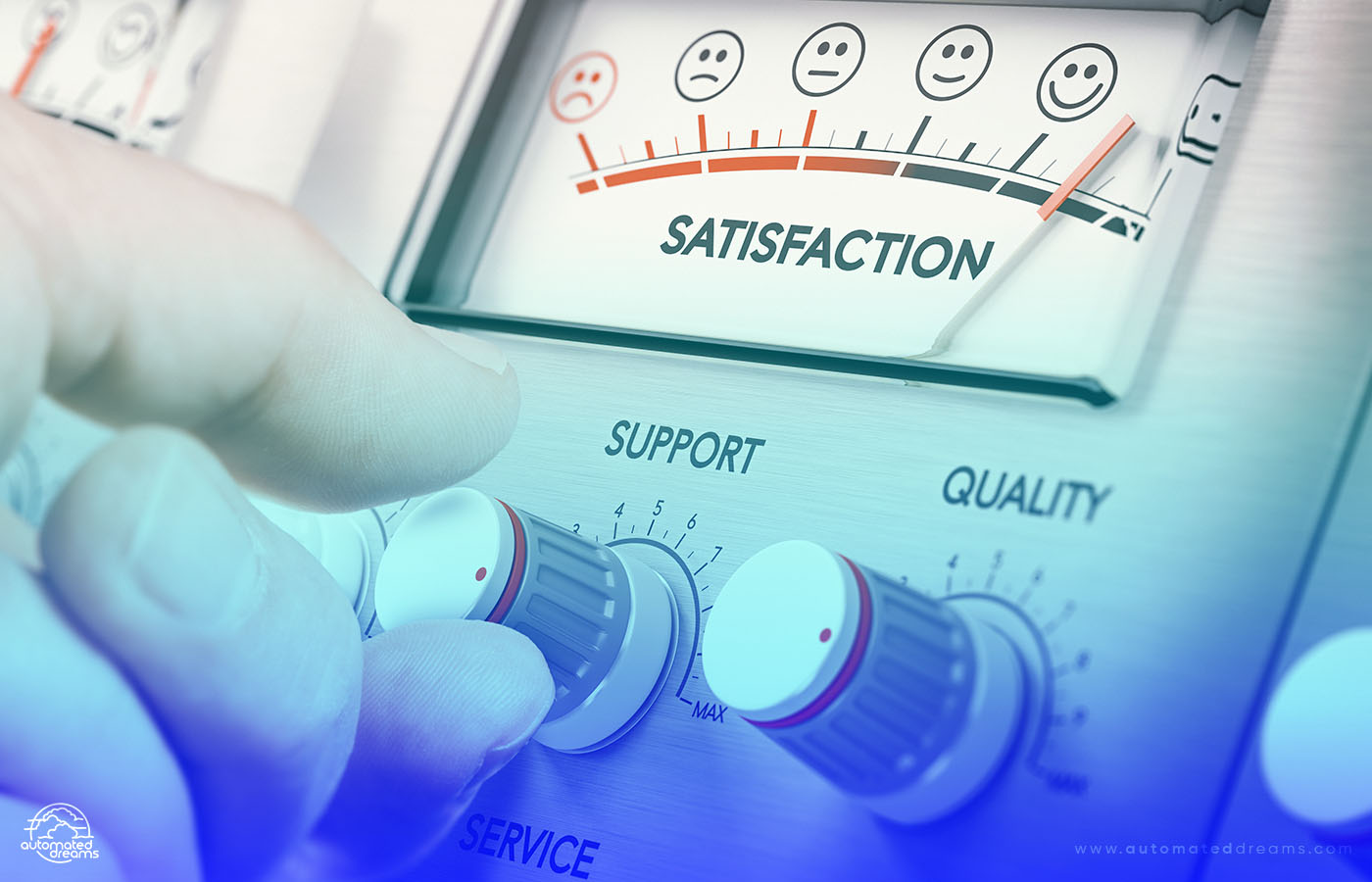Seamless customer experiences (CX) are critical if you are trying to differentiate your B2B organization as clients are now demanding buying experiences that are similar to those delivered by B2C companies like Amazon, Zappos, or Chewy. That’s no small order given that B2B buyer journeys, involving multiple buyers, are already much more complex, require more hand-holding, and entail longer, higher-risk purchase cycles. Getting it right and keeping it right is a huge challenge. As your business scales, your processes and workflow complexity multiply, making it essential to have a strategy to ensure processes evolve and improve. This is where the Methods Component of our Operational Maturity and Experience Framework (OMEF) comes into play.
A Quick Overview of the OMEF
The OMEF provides a clear, systematic approach to identifying and resolving inefficiencies that make it impossible to improve B2B customer experience at scale. It assesses your operational performance across five Stages of the customer’s journey: Awareness, Consideration, Purchasing, Retention, and Advocacy. Within each Stage, OMEF evaluates five critical Components that play a pivotal role in achieving scale and differentiation: Experience, Foundations, Structures, Tools, and Methods.
- Experience reflects the tangible results of CX efforts and creates the desired emotion that directly impacts customer satisfaction and loyalty (i.e., desired customer experience).
- Foundations ensure that your organization has the core principles and culture to support long-term success. (e.g., Go-To-Market/Marketing Strategy, Problem/Solution Matrix, Lead scoring criteria)
- Structures provide the necessary framework and governance to sustain scalable service delivery and growth. (e.g., Checkout process, Onboarding workflows, Multi-channel communication paths, Product/service delivery process)
- Tools enable efficiency and effectiveness. They allow for the seamless execution of CX strategies. (e.g., Sales Automation Tools, CRM, E-commerce platforms, Payment gateways)
- Methods offer a consistent approach to applying best practices and continuous improvement. (e.g., Customer journey mapping, Persona development, Sales playbook).
By integrating and optimizing these Components, you can systematically enhance your organization’s operational maturity, reduce friction, increase efficiency, and deliver a consistently superior customer experience.
Learn more about the Operational Maturity and Experience Framework
In this blog, we discuss why Methods (one of the Components) is important for differentiation, and how it helps to improve B2B customer experience as you scale. Let’s take a look at this case study.
Case Study: Coaching Firm Struggles with Manual Processes in Client Onboarding

A coaching firm specializing in executive leadership development was experiencing growing demand for its services with Fortune 500 clients in multiple industries. As the business expanded, its manual client onboarding process became a bottleneck. Each new client required a customized contract, followed by individual, manual onboarding sessions.
When we assessed the company, we found that it had a strong arsenal of tools. Its Experience, Foundations, and Structures were satisfactorily defined and built. While not differentiating the company’s customer experience, these Components were not the primary cause of underperformance. The firm had done a great job mapping the customer journey but it lacked a formal Method for reviewing and improving the onboarding process. As a result, the processes became stagnant. Onboarding became slow, errors were common, and the team was spending a disproportionate amount of time on repetitive tasks.
The firm was losing approximately 25% of its team’s productivity to manual tasks that could have been streamlined through automation and process improvement. The financial impact was notable as the firm was unable to onboard new clients fast enough to meet growing demand. The inefficient onboarding process, created by the lack of a defined Method, delayed new client engagements and resulted in a 15-20% slower revenue recognition cycle. With a growing client base, the suboptimization was leaving $200,000 to $500,000 annual revenue on the table.
By designing and implementing consistent Methods that help to analyze and reduce cart abandonment, increase recapture, and solicit post-purchase feedback, the firm could review its workflows frequently, identify inefficiencies, and implement improvements. This would allow them to scale operations without sacrificing client satisfaction and achieve the revenue potential hindered by inefficient processes.
The Importance of Methods in Improving B2B Customer Experience and Operational Maturity

While many B2B organizations establish solid Structures, they often fail to implement strategies and approaches to improve continuously and keep their workflows, tools, and teams operating efficiently and effectively as the organization grows. While Structures provide the foundational workflows and tools for managing each stage, Methods ensure that these workflows are continuously optimized.
The Methods Component involves regular process reviews, audits, feedback loops, and performance measurement. It ensures that your organization is not just running on autopilot but actively improving its ability to deliver excellent CX at every Stage. Without effective Methods, workflows stagnate, and you miss opportunities to optimize your processes and satisfy your customers.
Methods serve as the linchpin connecting all other OMEF Components across the customer journey. This is especially important in complex B2B environments, where customer needs evolve rapidly across the entire lifecycle, and operational systems must adapt to deliver consistent, high-quality experiences.
Let’s examine the three common issues that produce weak Methods that lead to sub-optimal performance and scalability.
3 Common Issues That Produce Weak Methods, Impact B2B Customer Experience, and Drive Low OMEF Scores

Issue 1: The “Set It and Forget It” Mentality to Operations
Even the best-designed structures become outdated as customer expectations, technology, and market conditions evolve. Many companies fall into a “set it and forget it” mindset, assuming that what works today will work tomorrow. Without ongoing improvement mechanisms, workflows quickly become inefficient.
As your business grows, processes that worked in the early stages may no longer be scalable. This is especially true in the Purchasing and Retention Stages, where repeat clients often experience friction due to outdated methods.
Inefficient workflows not only make the customer journey more cumbersome but also strain operational structures, making them harder to manage and scale. Outdated processes lead to increased manual labor, longer lead times, and more errors. These inefficiencies drive up your operational costs and hurt customer satisfaction through delays and inconsistent service.
You must take ownership of implementing continuous improvement Methods to keep your processes aligned with your business goals. Regular audits and performance reviews, such as quarterly audits will help you identify and address bottlenecks proactively. This also helps to maintain agility and augment operational maturity as you adjust your operations based on real-time data and feedback.
Issue 2: Inconsistent Application of Methods Across Departments
In many organizations, process improvement methods are inconsistently applied across departments. One team may have rigorous review practices, while another operates without any formal optimization mechanism. This inconsistency creates friction at interdepartmental handoffs and disrupts the customer journey.
This issue often surfaces during periods of growth, especially in mid-sized companies, where departments manage their own methods without a unified strategy. For example, in an enterprise SaaS company, Sales might have an efficient deal-closing process, while Customer Success lacks a system for regularly reviewing client onboarding.
Without a centralized approach, departments develop siloed processes that lead to miscommunication, fragmented customer experiences, delays, and duplicated efforts. Over time, this erodes customer trust and reduces overall efficiency as your teams struggle to align their workflows.
As a leader, you must take ownership of these issues and standardize processes for continuous improvement across all departments. Establish a central operations team to develop and enforce regular optimization of cross-functional workflows and keep everyone aligned with the broader operational strategy.
Issue 3: Failure to Measure Methods Before Optimization
Evaluation comes before optimization and many organizations fail on that front. Without regular metrics and feedback, it’s impossible to identify areas where your processes are underperforming or need refinement.
This issue arises when companies do not have formal metrics in place to evaluate the success of their operational methods. Without clear KPIs, it’s difficult to know whether Methods are working as intended or need adjustment.
The failure to measure Methods leads to inefficiencies as you cannot identify process bottlenecks or areas that require improvement. The failure to measure and optimize impacts the overall Experience, as your outdated processes will contribute to delays and frustration for customers. Additionally, it weakens the Foundations and Tools Components since your underperforming Tools may not be properly evaluated. Over time, this stagnation results in increased costs and lower customer satisfaction.
Your Operations team is responsible for ensuring that the organization’s Methods are aligned with customer needs and business objectives. Create and implement key performance indicators (KPIs) for all your processes and set up a regular review cycle to analyze performance metrics. You should also implement a feedback loop with both employees and customers to identify gaps in the process.
Implementing a feedback-driven optimization process ensures that inefficiencies are caught early and resolved. Regular reviews ensure that your Methods continue to deliver operational excellence.
Conclusion: The High Cost of Ignoring Methods in B2B Customer Experience and the Power of Proactive Optimization
Failing to implement and continuously refine your Methods can have significant long-term consequences. If your business has high-touch, complex B2B sales processes, the cost of inaction is steep. Inefficiencies and outdated processes can significantly slow growth.
A report from Salesforce shows that 57% of customers have stopped doing business with a company because a competitor provided a better experience. This highlights that outdated Methods not only reduce operational efficiency but also have a direct impact on customer retention and future revenue opportunities.
Inefficiencies due to stagnant processes can create friction across the customer journey, and impact everything from purchasing decisions to post-sale satisfaction. These hidden costs are often overlooked, but they compound over time and erode your bottom line and your brand’s reputation.
If you would like to know how strong or weak your Methods are, schedule, a call with one of our experts right away. We’ll be happy to evaluate them using the OMEF.


